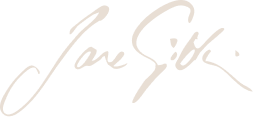Since the early 20s I have been working in the midlands and highlands of the Tasmanian landscape. This originates from my childhood, sitting in the car beside my father while he attended workplaces in the countryside of NSW.
My 2006 MFAD in painting gave rise to this renewed focus on this landscape and my subsequent 2013 MFAD in printmaking consolidated, wonderfully, my drawing practice.
I have been reading a range of Tasmanian history texts, learning about the invasion, the use of the land and periodically meeting up with the current inhabitants and workers. I have been documenting their work in fast ink and pencil, observing them at close quarters, in shearing sheds, stock yards and slaughterhouses and out in the fields.
What struck me during this research was that there has been, and continues to be a role amongst it all, for the working dog, which during the colonial era was most frequently a roo dog. The roo dog was a cross between a Scottish deerhound and a grey hound, selectively combined for strength and speed to bring down kangaroos.
In Tasmania, like the mainland, our indigenous people rapidly took up the roo dog. It appears, as we all know, within Duterrau’s The Conciliation (1840) painting and is a symbol for the loss and grief, and the offense of a very supposed treaty.
I found a painting of a roo dog chasing down a wallaby, by an unknown artist, shown at the NGV (from their collection of prints and drawings, Wallaroo and dog, c.1840, unknown artist) that hinted at the atmosphere I sought to explore.
Alongside this, I travelled to country shows and trials to watch dogs working. I befriended a female farmer who allowed me to spend time with her while she and her off-sider and many dogs sorted a flock of sheep for shearing. In addition, I had a farm hand sort, prepare, slaughter and dress a pair of sheep while I drew one, and photographed the other. I crept around after Tasmanian hunters and spoke to various possum shooters and shack owners about the general hunting that goes on in Tasmania.
In recording all of this, and being out there, I thought about the original inhabitants. Every time I have been out in the land, it very subtly reveals that history…in its vestiges of old roads and railway tracks and my knowledge of the guerilla warfare that occurred out amongst all the gullies and labyrinthine valleys. Thanks to George Augustus Robinson, I cannot drive around the state without imagining his endeavor and his failures. The property patronage and division and its subsequent interruption, of the early 19th century, created a spectacle of torture, death and tragedy. It is indeed, as Ted Colless complained years ago, gothic and therefore dreary to go on about. But any relationship with this landscape must, to some extent, take account of this past.
Perhaps this is merely my sorry and distant Anglo-Saxon/ Italian history. The Tasmanian characters, which had simply been almost annihilated, continue to play out in my mind when I sit out there, drawing and scratching around.
The scratch is important. I stare…I look slowly…and then pulling together the alliterations and interruptions and bulges before me…I scratch…the earth scratches, the fences scratch, the workers’ scratched out livelihoods, the dog scratch…. the itch of the past scratches away at me. I lay washes across the lines, to move the residue that has not been absorbed. I allow for fluidity and risk.
Over the years, I have struggled to place the figure in the landscape. Simply and compositionally, this has been a formal problem. Drawing the stock workers under the pressure of recording their activity, directly to some extent sorted this out, and provided a departure point. I enjoy chasing control of my tools under the pressure of an uneasy situation with place or environment and people.
Lately, the education department of Tasmania has removed the nude figure from life drawing classes, permitting only the “appropriately” clad figure to be drawn by our college students. This has been a sobering year.
I have chosen therefore to use my ex-students as models and to simply draw them…. re immersing myself with life drawing but using the ex-students as a defiant act. I take these models out into the field, with dogs and have been drawing them, playing on the role of Diana the huntress…and the fact that all I can grasp now, are white women, and common domesticated dogs. This provides another way of dealing with the figure in the landscape. The real figure is there, in the real landscape; life drawn, just like the stock workers I drew before.
This year, after last year’s successes with the Burnie Prize and acceptance into the Paddington, followed by this year’s win for Works on Paper in the Cossack, I was formally invited to present work for the Kedumba Drawing Prize, under their advice that I submit a work about animals.
The result of this is that I have built a body of work aligned with their request. Post Kedumba, the challenge returns to present the figure, and its dog, in a monolithic, but dynamic way, continuing to distil my experiences and ideas.
Jane Giblin
